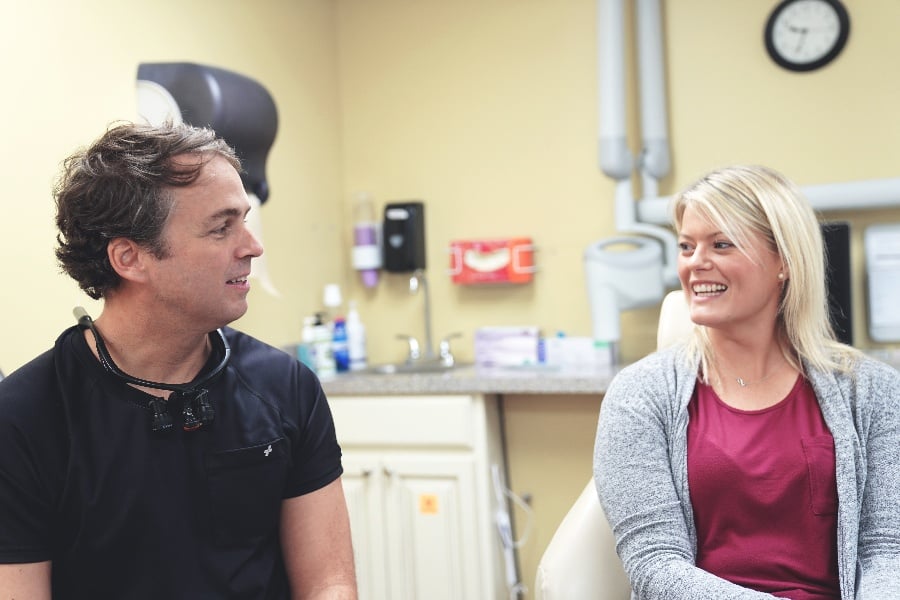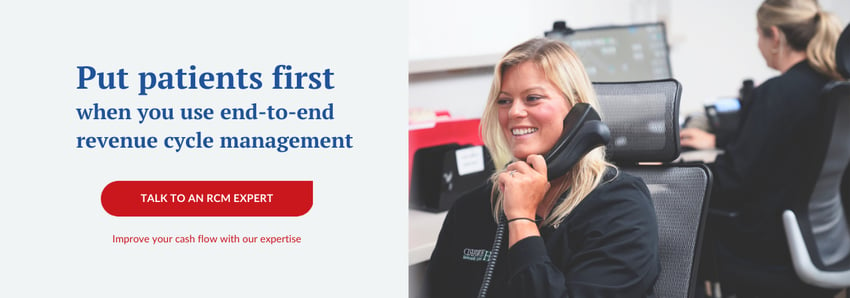Insurance verification or predeterminations: Which will slow you down, which will get you paid?


Which process is more efficient: dental insurance verification or getting predeterminations?
As a dental team member, you’re familiar with dental insurance verification and predeterminations. These are two processes to better help you and your patients understand their dental insurance coverage, and get an estimate for their out-of-pocket costs when they visit the dentist.
Well, we certainly have our preference as a dental billing company ourselves. DCS is a full-service dental billing partner that empowers dental teams to put their patients first. This is possible when your team doesn’t have to worry about tedious billing work, and can focus on creating invaluable relationships with each patient.
By helping to streamline your billing process, we are always partial to the option that we think is the most efficient: dental insurance verification.
However, we understand some patients insist on a predetermination for dental treatment and some dental professionals prefer them as well.
That’s why in this article, we’re taking you through the pros and cons of dental insurance verification vs predeterminations. Once you understand both, you can make an informed decision on which to implement more regularly at your dental practice in order to maximize the efficiency and accuracy of your patients’ out-of-pocket expenses.
Dental insurance verification
Dental insurance verification is the process of gathering patient insurance information before their treatment date. When they call to make the appointment, you will obtain their insurance details in order to verify the patient has coverage and the status as active (or inactive).
Once you’ve gathered the patient’s information, you will then log into their insurance portal to receive a full breakdown of their insurance plan and date of eligibility. This will give you the information you need to calculate their out-of-pocket estimate.
So what are the pros and cons of dental insurance verification?
Pros of dental insurance verification without predeterminations
Insurance verification is a process that can be very straightforward if you perform it correctly.
Related: Dental insurance verification checklist for dental teams
As long as you go through your insurance verification checklist and make sure to gather all of the patient’s insurance information two to three days prior to their treatment date, you’ll have the information you need.
1. Utilizing insurance verification as your means to calculate patient out-of-pocket estimates is quicker.
You can gather the patient’s information, go into their insurance portal to verify it, calculate their out-of-pocket estimate, and have that information for your patient in one day if you really want to.
That way if there is a problem with the cost, or they have less coverage than they were anticipating, you can discuss financial options with them before their appointment, with plenty of time to spare.
2. You also have more control over your process when you utilize insurance verification as a means to calculate patient out-of-pocket costs.
You have your own insurance verification process that you can follow, and calculate their out-of-pocket estimate when it works for your schedule.
Cons of using dental insurance verification without predeterminations
Of course, there are cons to everything.
1. There is a learning curve to learning to calculate out-of-pocket costs.
You have to learn how to properly interpret your patient’s insurance benefits, and learn how to calculate their out-of-pocket estimate. And this alone can be a huge part of why dental professionals love requesting predeterminations. The out-of-pocket estimate is calculated for you.
2. You have to pay closer attention to insurance policy changes.
Learning how dental insurance works and impacts the patient’s total cost can be challenging. Insurance rules and regulations change every year, and in order to accurately perform insurance verification, you need to keep up with these changes.
And when you use predeterminations for each patient, it cuts out some of that learning for you. Let’s get into that.
Dental predeterminations
Dental predeterminations are sent to try to get an idea of what the insurance may pay. They are not a promise of payment and are oftentimes not reliable (especially with the insurance maximums when claims are received after the predetermination was processed). You send your dental claim with the Header Information box #1 checked as: Request for Predetermination.
So insurance verification is going to be involved no matter what, but instead of using the information you gather during the verification process to interpret for yourself, the insurance company does it for you. The information is never a guarantee of payment and that needs to be stressed to the patient.
Pros of dental predeterminations
1. You don’t have to calculate patient out-of-pocket estimates yourself.
The insurance company will do it for you. This means you don’t have to spend time and resources learning how to do it yourself.
2. You have a form you can show the patients.
The predetermination will be given to you by the insurance company. With this form, you have a document of their out-of-pocket estimate. Patients love seeing a number in print that lets them know a ballpark of what they will be paying.
Cons of dental predeterminations
1. They are not the best use of your time.
The biggest cons of dental predeterminations are the time they take and oftentimes result in the delay of treatment.
As we mentioned, predeterminations are like pre-claims. So you’re doing all of the work it would take to create a claim, only to receive an estimate, not a payment. So it would take up to two-three weeks to receive your predetermination when you could have just calculated the estimate yourself in a day.
2. You are giving dental insurance companies more control over your process.
Waiting on insurance companies to send you an estimate just gives them more control over your billing process. You already have to depend on them for claim reimbursement. And that’s not going away! Learning to calculate the patient’s out-of-pocket estimate yourself can give you back control of at least a portion of your billing process.
Also, there is a keyword here: estimate.
Related: 3 problems predeterminations cause for your dental practice
3. Predeterminations are just estimates.
And these “estimates” can still change once the actual insurance claim is sent. So you’re not truly giving your patients reliable information.
4. Patients could become fixated on the number in the predetermination.
Because it is straight from the insurance company, your patient could be peeved if that is not what their out-of-pocket costs actually end up equating to. There’s always a chance the number can change based on their treatment or policy changes.
You have to make sure that no matter what method you use to calculate the out-of-pocket estimate, you let the patient know this number could change, and that they’re responsible for their portion no matter what.
Ready to get properly paid by both patients and insurance companies?
You now have all of the information on predeterminations and insurance verification in order to make an informed decision on how to move forward with structuring your billing process.
Depending on insurance companies for information can be a huge waste of time and money. This is why we do not recommend using predeterminations to receive patient out-of-pocket estimates. You can do it yourself! Or you can outsource a service to handle that entire process for you.
DCS is a dental billing friend that can help you get easy revenue collections from both patients and insurance companies. To learn more about how to get a worry-free billing process, schedule a call with one of our experts.
Related Posts
Dental revenue resources from Dental Claim Support

